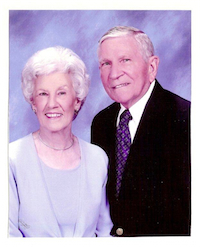To be perfectly honest, it has been several years since I have dyed Easter Eggs. My boys grew out of them, and not being sentimental like girls, they never really cared if I had any or not when they came home. So, I didn’t. I suppose that WHEN the good Lord sends me some grandchildren, I will do them again. Until then, pictures will do just fine.
None of that means that I do not think they are beautiful. They are, and there are so many different ways of dyeing them…it can get quite creative. Here are a few that I think are beautiful.
These are Ukranian Pysanky eggs. They are done with a batik method using wax and layer upon layer upon layer of dyes. Much time is required for this process…not to mention patience! These are done on blown eggs…so they are very fragile.

Here are some ordinary Easter Eggs, done as I always did with food coloring and vinegar. I love all the pastels. To make polka dots and stripes, add stickers from the office supply store and rubber bands. They stick very well, and do not come off in the dye.

Now, these are works of art! If I had these I would put them in a glass box to keep them protected. Oh, the steady hand it must take to do these…along with good eyesight! These are goose eggs, by the way. They are stronger than chicken eggs.


Do you see the tiny drill the artist uses? Many times they work with dental tools!

These are Bulgarian Easter Eggs. These are all done with natural dyes. See the ones with the leaves on them? The leaves are applied and then the eggs are wrapped in strips of pantyhose tied at each end to hole the leaves in place. Some of the dyes are turmeric, onion skins, cabbage, and beets.


This is an Emu egg. This egg has many layers, each layer being lighter in color than the previous one. So, it requires many hours to complete.

And, last, these are Chinese Tea Eggs. The eggs are hard boiled, then cracked gently with a spoon and then dyed in strong brewed tea. Sometimes soy sauce is also used. Actually, I think the shell is prettier than the eggs!

******************************
In ancient Egypt and Persia people exchanged decorated eggs at the spring equinox, the beginning of the new year. The eggs were seen as a symbol of fertility for them because the coming forth of a live creature from an egg was so surprising to people of ancient times.
Christians adopted this tradition, and the Easter egg became a religious symbol. It represented the tomb from which Jesus broke forth. In medieval times eggs were traditionally given at Easter to all servants, and to the children, along with other gifts. It seems that the custom of hiding the eggs is a universal one.
******************************
Once, when Adam was very young…perhaps his first Easter Egg Hunt, he did not quite understand the concept. I told him to get ready and wait by the door for me. I gathered my things and met him at the back door. There he stood in his camoflage jacket and hat, boots to his knees, and gun in hand. “Why are you dressed like that?” I asked, “I had your clothes laid out on your bed!” He looked at me like I was from another planet. “Mama,” he said,”you can’t wear church clothes to go hunting…this is what you ‘spose to wear!” And, that day, that was exactly what you wore to go Easter Egg HUNTING!!!!!









Love the outfit for the egg hunt!
Beautiful examples of eggs. I can't believe the ones they use those little drills on. I don't do eggs anymore but we always did the oil ones that looked like tie/dye.
Have a wonderful Easter.
Now those are some beautiful eggs! I sadly have never enjoyed dying eggs and only did it when my kids were young for them. I'm not crazy about the smell of vinegar!
And of course you need hunting clothes to hung eggs! 🙂
What a lovely art gallery this morning! The beautiful works of hands, the meticulous tracery and dye, the hours of painstaking labor for a thing which might at any moment shatter in the palm—that is dedication to an art.
We have several ostrich eggs, simply polished a bit to make them like enormous pearls, and a smaller, more interesting emu egg, which is the deepest green in nature, I think. I can see exactly how that panda was sculpted and brought out in the successive layers. Amazing.
What a cute Easter memory for Adam! Bless his heart…hunting needs camo even if it's just egg. LOL
Hugs!
Kat
Beautiful!!
I love dying Easter eggs. And I feel very sad that I won't be doing it tomorrow because Destiny was not allowed to spend Easter break here due to misbehavior at school earlier this week. Maybe if things work out for next weekend, we'll just do Easter eggs a week late.
Did you see on Cherdecor's blog that she dyed eggs with some old silk neckties?
Wow these are beautiful! I always knew there were probably people out there that made eggs prettier than the traditional dye and vinegar appliqu?
Ukranian Pysanky eggs are a real masterpiece. They are very beautiful.
I usually diy Easter eggs using natural dyes: onion skins, cabbage, and beets. Thanks for describing the Bulgarian method of decorating eggs. I will also try to do some nice leaves this year.